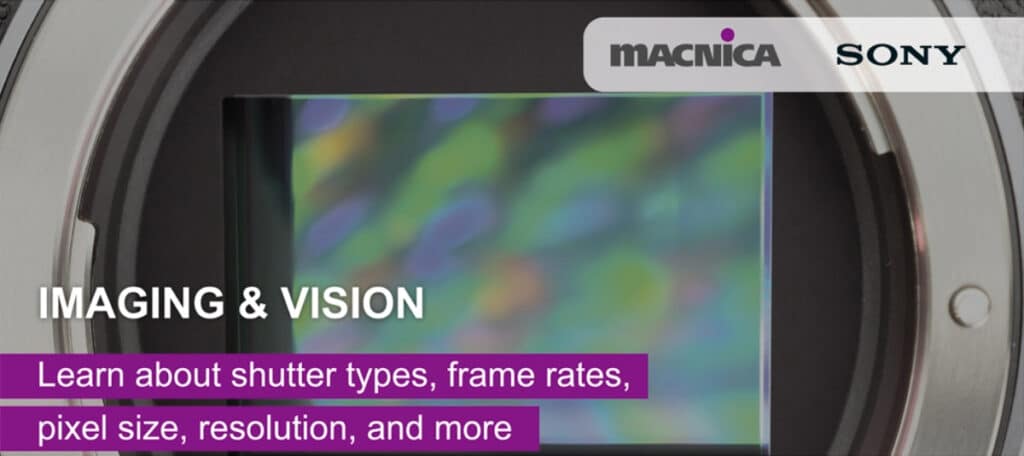This blog post was originally published at Macnica’s website. It is reprinted here with the permission of Macnica.
Choosing an image sensor isn’t just a line item on the BOM – it defines how well your camera, robot or inspection system will perform for the next decade. Our new whitepaper, “Image Sensor Selection: Key Factors to Consider Based on Your Application,” distills the latest CMOS know-how from Macnica Senior FAE Dr. Mary Narreto into a practical decision framework. Below is a sneak-peek at five decisions the paper unpacks – plus links to the tools Macnica provides so you can move from spec to working prototype with confidence.
-
- Global Shutter vs. Rolling Shutter
Rolling-shutter devices are smaller and more cost-effective, but fast motion can introduce skew and wobble. The paper shows when you can mitigate artifacts with higher frame rates or a stabilized mount – and when you simply need a Sony Pregius S global-shutter sensor to keep every pixel in lock-step. - Frame-Rate, Exposure Time and Dual-Speed Streaming
Need to read a license plate on a vehicle doing 80 mph? Increasing frame rate or using Sony’s Dual-Speed Streaming mode (300 fps+ in a windowed ROI on the IMX675) can outrun motion blur without jumping to a global-shutter part. - Pixel-Size vs. Resolution
BSI technology has rewritten the old “big pixels = better sensitivity” rule. Starvis 2 rolling-shutter parts squeeze 2.9 µm pixels into tiny packages yet deliver a 4× sensitivity bump over previous front-illuminated designs. The paper explains how to balance optical MTF, lens cost and diffraction limits – especially for NIR/SWIR work. - Interface Bandwidth and Processing Platform
High-res sensors require serious pipe. Sony devices with an SLVS-EC v3.x output can pump 12.5 Gb/s per lane. Macnica’s SLVS-EC Rx IP core and Luminous Platform evaluation kit let you capture that data on Altera FPGAs the same day the sensor board arrives. - Hidden Value in On-Chip Features
From quad-exposure HDR on the IMX900 to on-sensor motion-detection in the IMX536, modern CMOS imagers ship with features that slash downstream processing requirements. The whitepaper walks through lesser-known modes you can exploit to cut power or BOM cost.
- Global Shutter vs. Rolling Shutter
Why Download the Whitepaper?
- Side-by-side decision tables comparing shutter type, pixel pitch, frame-rate ceilings and HDR options.
- Application checklists for robotics, security, UAV mapping and factory automation.
- Design-for-supply advice from Macnica’s distribution team to keep your line running in a tight market.
Get the full 10-page guide here.
How Macnica Accelerates Your Vision Roadmap
As Sony’s authorized sensor distributor for the Americas, Macnica offers far more than device availability:
- Hands-on design help. From optical path tuning to FPGA image-pipeline design, our engineers close the gap between concept and production.
- Complete tool-chain. Evaluate imaging IP, interface cores and analytics software on the Luminous Platform before you spin your own board.
- End-to-end supply security. Lean on a single partner for sensors, processing silicon and logistics – plus lifecycle support matched to industrial and medical product horizons.
Ready to fast-track your camera or machine-vision design? Contact Macnica’s Imaging & Vision team and start building with the best sensor for your application.


